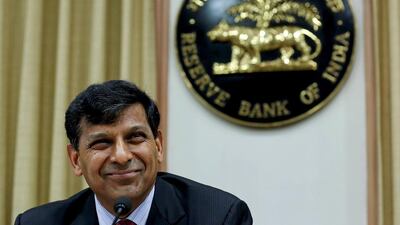Even though emerging markets as a whole face considerable headwinds, India has outperformed its global peers in 2015. In fact India remains one of the most popular consensus trades in global equity markets. This can be attributed to relatively better macro conditions compared to other emerging markets including a narrowing current account deficit, a stable Indian rupee and low exposure to China.
Although the Sensex has moved into negative territory for the year with a 2 per cent year-to-date decline in local currency terms and 4.9 per cent year-to-date in US dollar terms, India has outperformed its global peers. The MSCI India index has lost just 0.4 per cent year-to-date, against drops of 10 per cent in the MSCI EM index and 0.8 per cent year-to-date in the MSCI ACWI (All Country World Index).
The explanation for this outperformance lies with the sharp turnaround in India’s macro fundamentals over the past two years. Based on Bloomberg consensus estimates, India is likely to be the fastest growing economy within the EM universe with GDP growth of 7.5 per cent in fiscal year 2016 and 8.0 per cent in fiscal year 2017 compared to average growth of 4.9 and 5.1 per cent, respectively. The current account deficit is likely to remain contained at 1.2 per cent of GDP in fiscal year 2016, a far cry from the high of 5.1 per cent in fiscal year 2013, while consensus forecasts suggest that the government is likely to meet its fiscal deficit target of 3.9 per cent in fiscal year 2016. With inflation also likely to remain well within the current range of 4 to 6 per cent, India could begin to enjoy something of a “Goldilocks” period over the coming months.
According to a recent report in the Financial Times, India surpassed the US and China as the biggest FDI destination in H1 2015 with inflows of $31 billion compared with $28.2bn in 2014 and $22bn in 2013. This at a time when FDI into emerging markets is showing a declining trend augurs well for the Indian economy, which is heavily reliant on foreign funding to meet its infrastructure and capital expenditure needs.
From a policy perspective the steps taken by the Reserve Bank of India in recent years have also earned credibility, standing India in good stead in the event that the external environment turns more challenging, which it most likely will when US interest rates start going up. The RBI’s recent 50 basis points repo rate cut took rates to 6.75 per cent, their lowest level since 2011, and was in line with the RBI’s strategy of front-loading rate cuts to allow room for manoeuvre in case of returning risk aversion. The aggressive stance by the RBI should also facilitate faster transmission from banks to consumers.
Of course the ability to execute such a bold policy can be attributed to a stable inflation trajectory, with the RBI revising its January 2016 inflation target to 5.8 from 6 per cent earlier and shifting its focus to a 5 per cent target by the end of fiscal year 2017. The RBI expects to keep monetary policy accommodative and expects investments to respond strongly now that the policy direction is more certain. The latest consumer price index bears out the RBI’s conviction over the inflation trajectory, with the CPI in September at 4.4 per cent year-on-year, still well below the RBI’s 5.8 per cent target.
Going forward the outlook is not completely without risk. Inflation is likely to experince some upwards pressure owing to base effects and as the lagging impact of weaker food production filters through, although the sustained weakness of oil prices should help to provide some offset. Also the transmission of the reduced cost of capital into private investment and the real economy may take a while, especially in the context of the government’s inability to push through its flagship reform ie, goods and services tax.
However, relative to many other emerging market economies India does appear to be fundamentally better positioned to absorb any external shocks that might arise from here, certainly when compared to its situation when the taper tantrum took place two years ago. With the Indian rupee having only fallen 3.2 per cent against the dollar year-to-date it has outperformed most of the EM currency world so far this year. The possibility of an end-year US rate hike, as well as a number of domestic political risks cannot be ignored, but at least the platform from which India responds to these challenges is more secure.
Tim Fox is head of research & chief economist at Emirates NBD and Aditya Pugalia is a financial markets analyst at Emirates NBD.
Follow The National's Business section on Twitter

